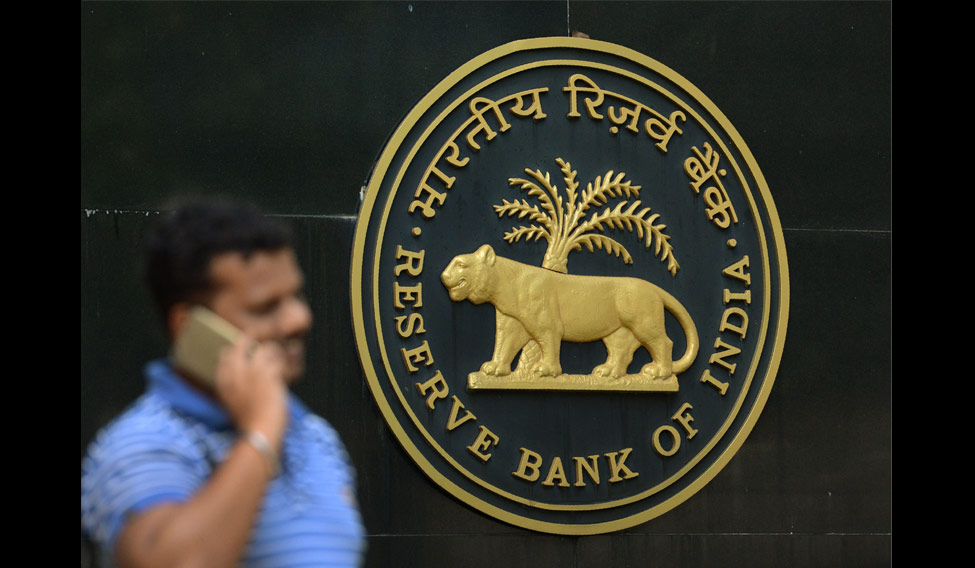The Reserve Bank of India held its policy rate steady near seven-year lows on Wednesday after inflation surged, but still looked to prop up the cooling economy by spurring banks into lending more.
The decision to keep the repo rate at 6.00 per cent had been widely expected, with all but three of 60 analysts polled by Reuters predicting the RBI would stand pat after cutting the rate by 25 basis points (bps) in August.
But in a concession to the weakening economy, which is growing at its slowest pace in over three years, policymakers surprised markets by taking steps to release more liquidity into the financial system.
The RBI said it would lower the statutory liquidity ratio (SLR)—the amount of bonds that banks must set aside with the central bank—by 50 bps to 19.50 per cent from mid-October. It had lowered the ratio by the same amount in June.
The move will give banks more funds to lend, though previous efforts to revive the country’s weak private investment have largely failed.
The SLR cut and a statement seen as hawkish sent bonds sharply lower, but the rupee and stock markets rose.
In focusing on measures that target banks to support the economy, the RBI signalled its unwillingness to use stronger monetary policy tools after consumer inflation hit a five-month high of 3.36 per cent in August, not far from the central bank’s 4 per cent target.
The RBI said it would thus keep its policy stance at “neutral,” and raised its price projection for October-March to a range of 4.2 to 4.6 per cent, above its inflation target and above its previous forecast for around 4.0 to 4.5 per cent.
“The tone of the statement was more hawkish than markets expected,” said Ashish Vaidya, executive director and head of trading and asset liability management at DBS Bank.
The meeting’s outcome had removed “chances of any rate cuts going ahead as of now,” he added.
Five members of the committee, including Governor Urjit Patel, voted to keep rates unchanged, while Ravindra H. Dholakia, a prominent dovish member of the panel, voted for a cut of “at least” 25 bps.
The RBI also kept the reverse repo rate unchanged at 5.75 per cent.
The benchmark 10-year bond yield rose to as much as 6.71 per cent, the highest since May 19, from its previous close of 6.65 per cent. But the rupee strengthened to as much as 64.9450 per dollar from its close of 65.49, while the NSE share index ended up 0.6 per cent.
Focus on banks
The RBI on Wednesday reiterated its policy priority is to keep inflation at around 4 per cent “on a durable basis”, the midpoint of its mandated target of 2 to 6 per cent.
It cited a slew of concerns on inflation, including rising food costs, price revisions after the recent implementation of a national goods and services tax, and stubbornly high core prices.
The worries come after RBI officials took advantage of an extraordinary period of low inflation to cut rates by 200 bps from January 2015 to August 2017, when it became the first Asian central bank to cut rates this year.
But as it seeks to now focus on inflation, the RBI is bound to face pressure from government officials and executives to help prop up an economy that in months has gone from one of the fastest expansions in the world to growing only 5.7 per cent in April-June, well below the 8 per cent needed for full employment.
The RBI acknowledged the weaker growth on Wednesday, cutting its end-March projection for gross value added - the indicator of economic growth it prefers - to 6.7 per cent from its previous forecast of 7.3 per cent. Some analysts, however, believe it could be much lower at around 6 per cent.
Yet, whether its decision to lower the SLR will do much to spur economic growth is uncertain. The previous ratio cut in June had little discernable impact.
The liquidity move is somewhat similar to one by China’s central bank last weekend to cut banks’ required reserve ratio (RRR) next year if they meet certain targets such as lending to more vulnerable sectors such as small businesses.
But the RBI has long struggled to get banks to pass on all of its policy cuts and coax them into lending more, given the sector is dealing with around $140 billion in soured loans and bankers have long sought to protect profit margins.
Governor Patel suggested the economy could rebound from the previous quarter, pointing to indicators such as improving industrial output, suggesting the central bank did not need cut rates again at this juncture.
“There is the possibility that the cyclical upturn will happen in the next two quarters,” he told reporters in a news briefing.
- Reuters





